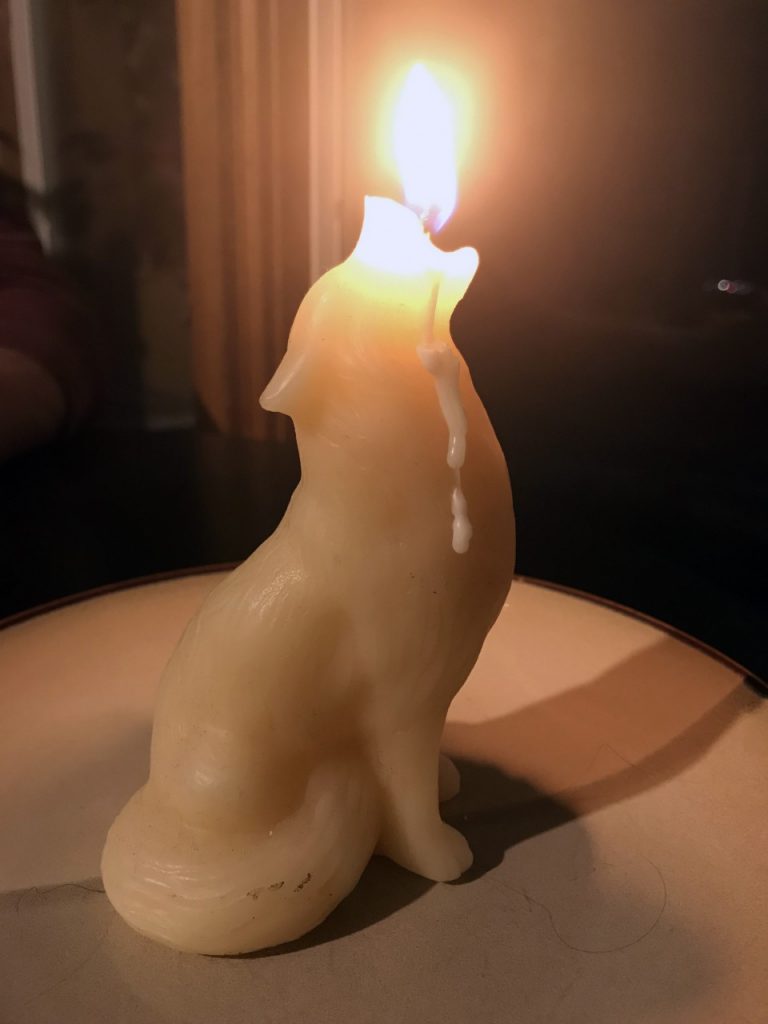Sorting Beef
I arrived Friday morning a few minutes late. I promised to be there at 7 am for the first deliveries, but I hit traffic and the trailers were lined up. The first one had already been emptied and that beef producer was staying around to help unload some of the cattle coming behind.
An annual rite of spring, the spring beef sale was underway. I look forward to it every year and mark the date on my calendar months ahead. OK, maybe it’s not that exciting to people who work with beef cattle every day, but I don’t, and it’s been one of my greatest regular farm-related learning experiences in the past ten years.
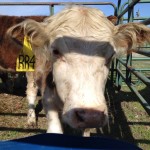
The sale is nearly all volunteers, with a few paid Expo staff helping to set up and tear down the cattle chute, State animal health folks evaluating –um, animal health– and a USDA grader deciding which animals would go to which pens. We receive over 100 animals, usually from 20+ different farms. Some are pure beef breeds like Angus or Hereford. Some are dairy crosses like the group of Holstein-Park White cattle from this sale. That group also had some Park White-Hereford crosses, and it was fun to guess which was which by their body types and their brown (vs. black) ears. Others are completely mixed crosses and the game is to figure out what they actually are (breedwise).
I’ve learned a lot about handling cattle and recognizing their movements. I can tell which ones get a wild eye and whether we should move them to an inner pen (harder to escape). I’ve learned to watch their ears and listen to their breathing. This is all similar to other livestock like sheep and horses, of course, but these are animals that I’ve only met five minutes ago. And they are big. The key to keeping things calm is to anticipate their moods, because when an animal that big wants to go somewhere, they usually do.
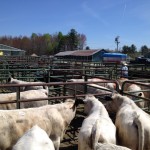
I’ve learned a lot about how to sort single cattle from pens and how to get groups to move. I’ve gotten the chance to practice testing that balance point on the shoulder to make them change direction, without a cattle cane or a rattle or a prod. They’ll go…no need to stress them…but sometimes that takes learning what will make them go, and each individual can be different. I’ve also learned when to step up on the fence rail and just let them go where they’re going.
As we work, the safety and comfort of each animal (and person) is the top priority wherever possible. For this day, it was crazy hot and we ended up dedicating a person with a hose to each aisle of pens, just filling water tubs. We hosed down the outside of the cows to help them stay cooler. We kept checking with each other to make sure the humans had water, too.
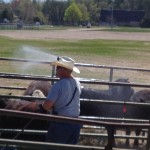
That said, sometimes a cow comes in wild. Maybe she wasn’t wild at home, but the combination of new, open space, new smells, trailer ride, different humans, or some variation, causes her to lose it. Several years ago, we had a heifer whose eyes showed nothing but whites and we couldn’t get her to stay inside a pen. She came off the truck like that (the owner swore she was quiet as a mouse at home) and we directed her into a pen with other cows to settle down. She crawled under the metal pen (more than once), dragging a whole series of connected panels with her and upsetting nearby groups. Sometimes there’s a point where they can’t be reasoned with. Temple Grandin describes this state as panic, and is often caused by separation anxiety. In the case of this heifer, we put her back on a trailer where she calmed down in the relative quiet and dark. We had done nothing to [knowingly] contribute to that–it was just a perfect storm for her.
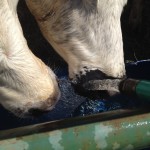
On this morning, it didn’t take long; within about half an hour we’d handled the backed-up trailers. Cattle in their farm groups were settling in to dedicated pens. The unloading crew chatted and waited for the next delivery. We discussed the pros and cons of different breeds, feed choices, whether prices would be up or down this year. We stopped to check out the handling chute and see whether they were ready for another bunch to weigh and tag. A steer got himself turned around in the chute and they had to open the side door to let him out, but then the line moved along again.
No wildness this year, and that was just fine by us. Looking forward to next spring already.
Jenn
